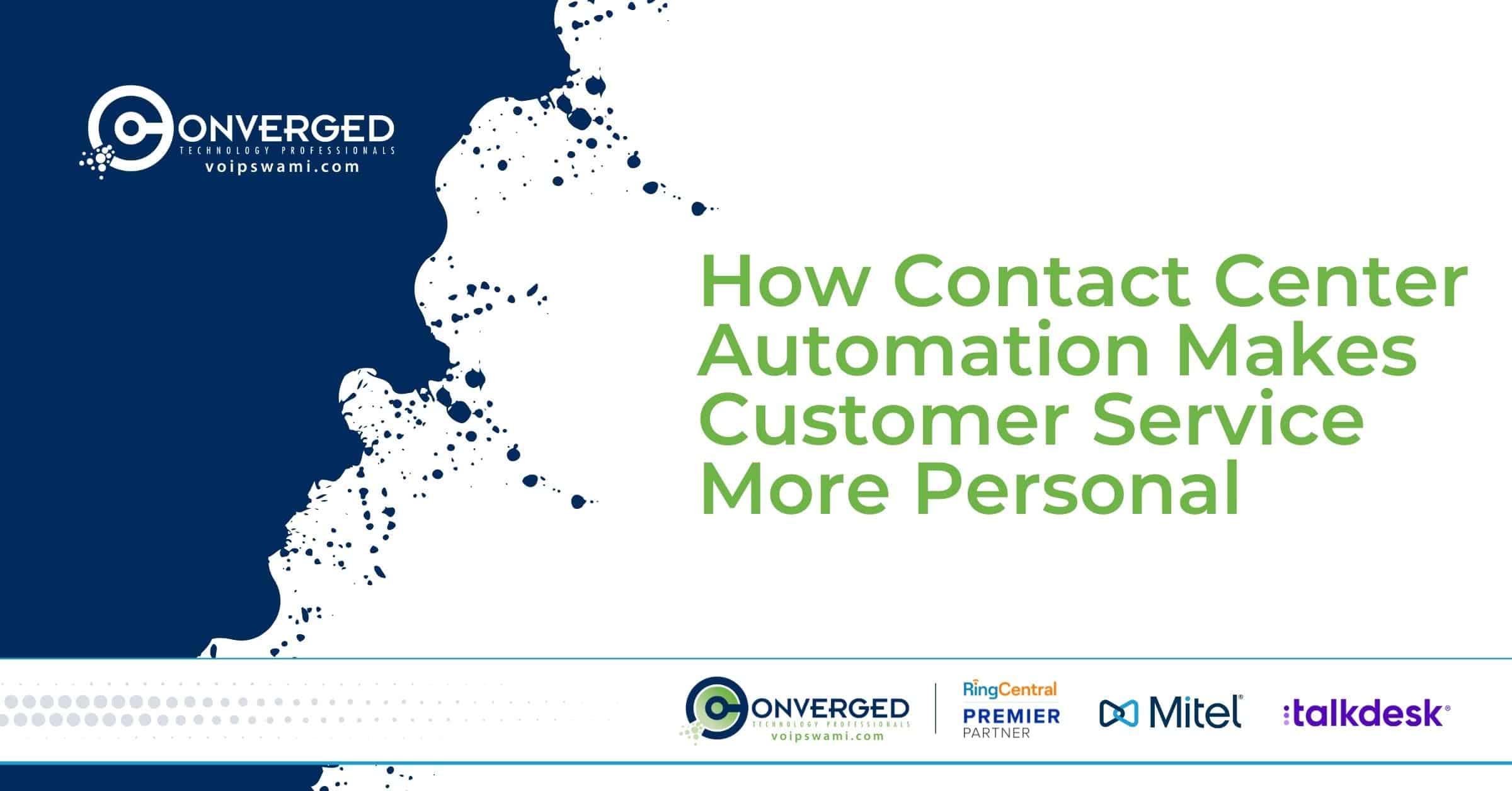Picture this: a noisy room filled with weary customer service agents sitting shoulder-to-shoulder, answering never-ending phone calls one after the other while management paces the aisles.
The goal used to be to answer as many calls as possible each day since customers had to phone in for a resolution; there were no other options. Every aspect of the contact center was geared towards quantity—get to the next customer as quickly as possible, and the next one, and the next.
Quality of service was always secondary due to the sheer amount of call volume.
But the modern contact center has changed that. It's less about the volume of calls taken (although that's still an
important metric) and more about building a loyal customer base through personalized, efficient, solution-centric service on the customer's terms. Certainly, cloud-based contact center technology plays a significant role in aiding that shift.
As the industry evolves, there are always new ways to improve the customer journey while helping employees do their jobs better.
How can you offer your customers a more personalized contact center customer experience? By embracing modern technology and robotic automation.
What is Robotic Process Automation (RPA)?
RPA is a technology that creates and manages software robots that perform human operations through digital systems. Software robots can do things like identify and extract data, understand prompts on computer screens, complete keystrokes,
navigate systems, and more.
Cloud contact center platforms utilize RPA functionality to help organizations automate defined customer contacts. This automation frees up human agents and allows organizations to target interactions that need escalation to a live representative,
thereby providing a better experience for everyone involved.
Here are examples of ways RPA helps make customer service more personal:
Enhanced Self-Service - bots powered by artificial intelligence (AI) guide customers through various actions if they'd prefer to help themselves using their preferred channel without interacting with a live agent. These robots work
in conjunction with existing contact center features such as IVR (interactive voice
response) to expedite all forms of communication.
Improved Efficiency - robotic automation can help increase agent productivity by synthesizing information into a single dashboard giving agents everything they need in one place. Your agents have more time to listen and
more expediently solve issues when the representative doesn't waste time searching for information.
Better Analytics - Knowing what's going on behind the scenes aids in streamlining processes, so customers land where they want and receive resolution on first contact (FCR). However, there are many systems from which to glean information. Software robots help your contact center system integrate with mission-critical systems like Salesforce and Teams to provide a singular view of
important data and metrics.

How Automatic Speech Recognition (ASR) Makes Customer Service More Personal
Voice technology goes a long way toward improving customer experience. From chatbots to virtual customer assistants, these tools lend credence that automation makes the customer experience more engaging, personalized, efficient, and accurate.
According to Business Wire, the expected growth of the global voice and speech recognition market is 19.5% during 2021-2026.
While voice technology isn't new, it is getting better and better over time. Consider automatic speech recognition or ASR, which turns voice, audio, and video files into text. ASR relies on artificial intelligence (AI), also known as machine intelligence
that, like humans, can learn over time.
Predict more positive future results while identifying areas of opportunity for improvement.
Provide insights through analysis of contact center call recordings.
Drive future directives that affect the customer's experience, from simplifying communications to resolving pain points.
Recognize trends and produce meeting summaries.
ASR can also make customer interactions more inclusive, recognizing various languages and dialects, translating the spoken word to clear text no matter the language.
Contact center automation isn't going to replace live agents, nor should it. However, using technology to enhance customer interactions and understanding is undoubtedly one way to make the service experience more personalized.
Would you like to learn more about robotic automation? Contact us for information.
If you enjoyed this article you may also enjoy:
